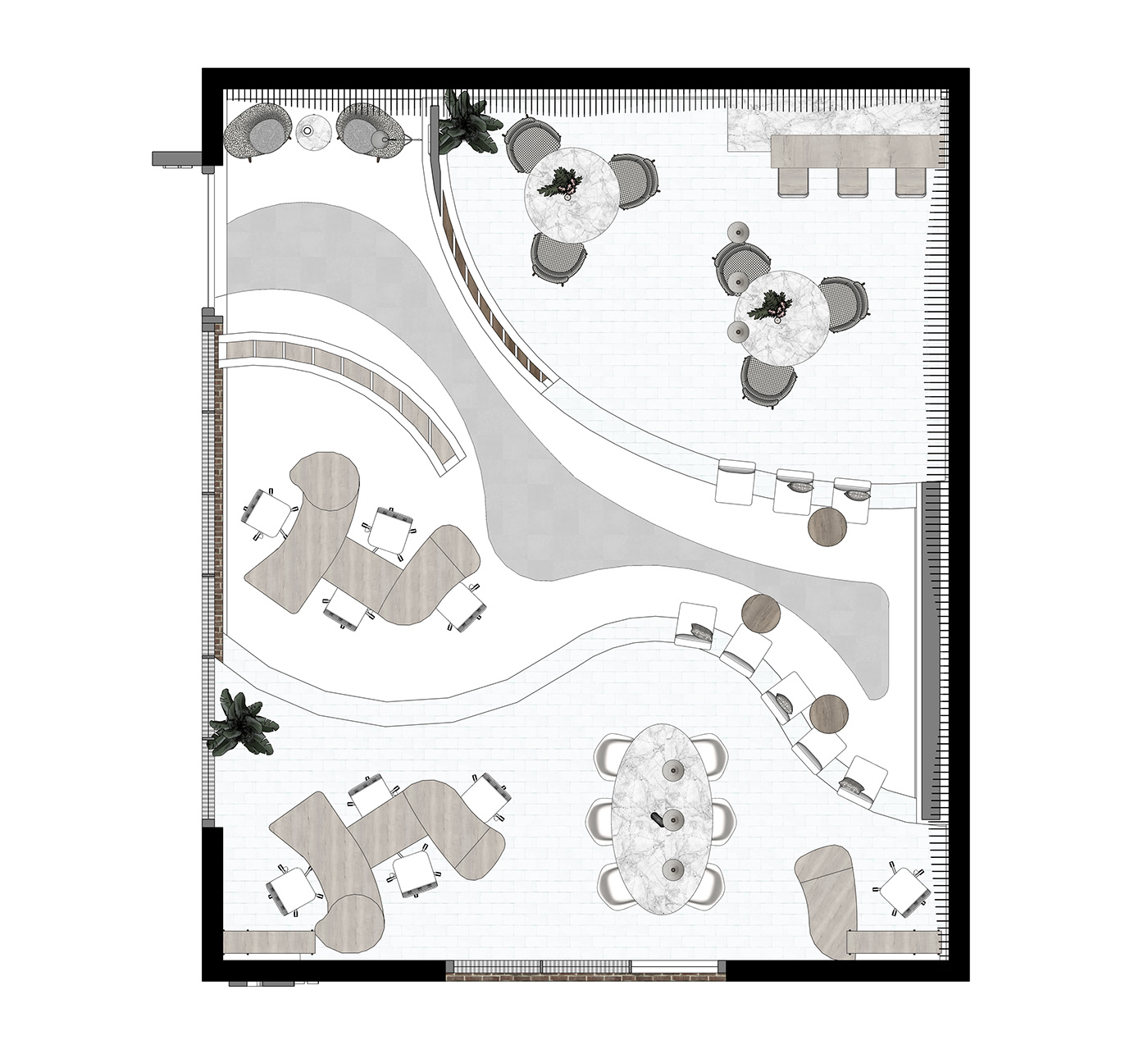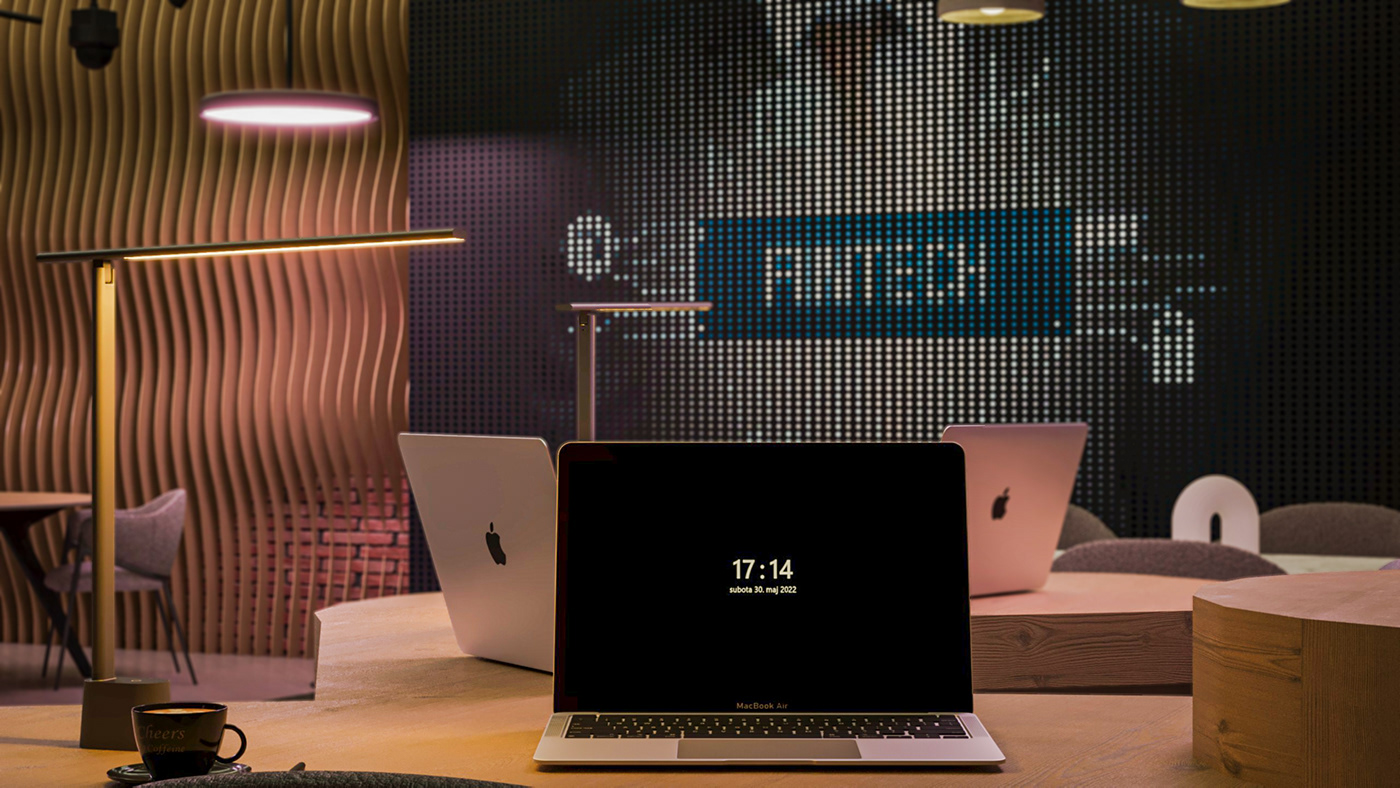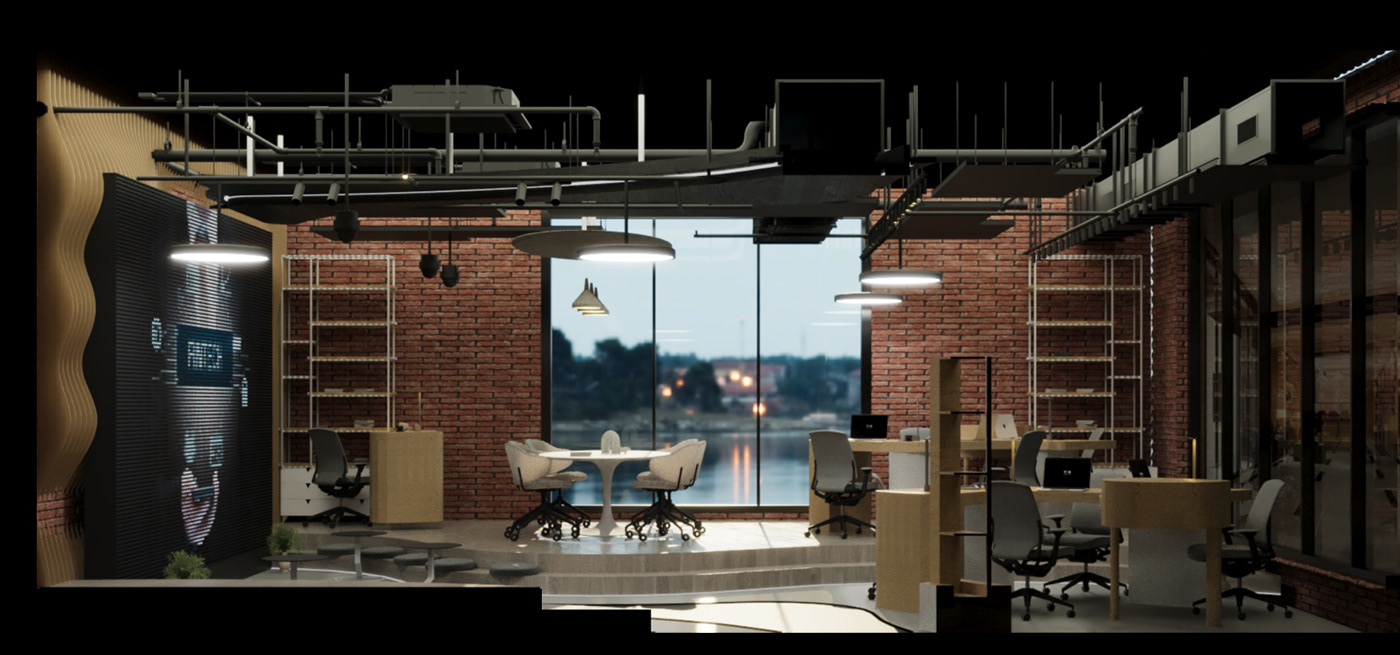
Our participation in IDS competition
"The office of the future"
and we got the top 10 places..


We are creating an effective and harmonious workspace for employees involves careful consideration of both physical and psychological factors to promote productivity and well-being. Here's an overview of how interior design principles that we use in our design applied to achieve this goal.



*Technological Harmony*: Incorporating modern technology seamlessly into the workspace is essential for productivity. This includes providing adequate power outlets, fast and reliable internet access, ergonomic computer setups, and spaces for video conferencing or virtual collaboration.

*Natural Harmony*: Integrating natural elements into the workspace can have a positive impact on employee well-being and productivity. This can be achieved through the use of natural light, indoor plants, natural materials such as wood or stone, and views of nature whenever possible.

*Efficient Layout*: Designing the layout of the workspace to facilitate efficient workflow is crucial. This involves creating both shared and private spaces that are easily accessible and conducive to different types of work activities. Open-plan layouts can promote collaboration, while private offices or quiet zones provide opportunities for focused work.

*Activity-Based Working (ABW)*: ABW is a design approach that focuses on providing a variety of work settings to support different activities and work styles. This includes areas for collaboration, concentration, socializing, and relaxation. By offering a range of spaces, employees can choose the environment that best suits their current task, leading to increased productivity and satisfaction.

*Financial and Technological Integration*: Designing the workspace to seamlessly integrate financial and technological aspects involves ensuring that financial tools and resources are easily accessible and that technology is integrated into every aspect of the workspace. This can include digital displays for financial data, interactive dashboards, and integrated software systems.

*Creating Shared and Private Spaces*: Balancing shared and private spaces is essential for maintaining a sense of community while also providing opportunities for focused work. This can be achieved through the use of flexible furniture arrangements, movable partitions, and designated quiet areas within an open-plan layout.
Overall, by incorporating modern technology, natural elements, efficient layout design, ABW principles, and careful consideration of shared and private spaces.








Thank You ...



